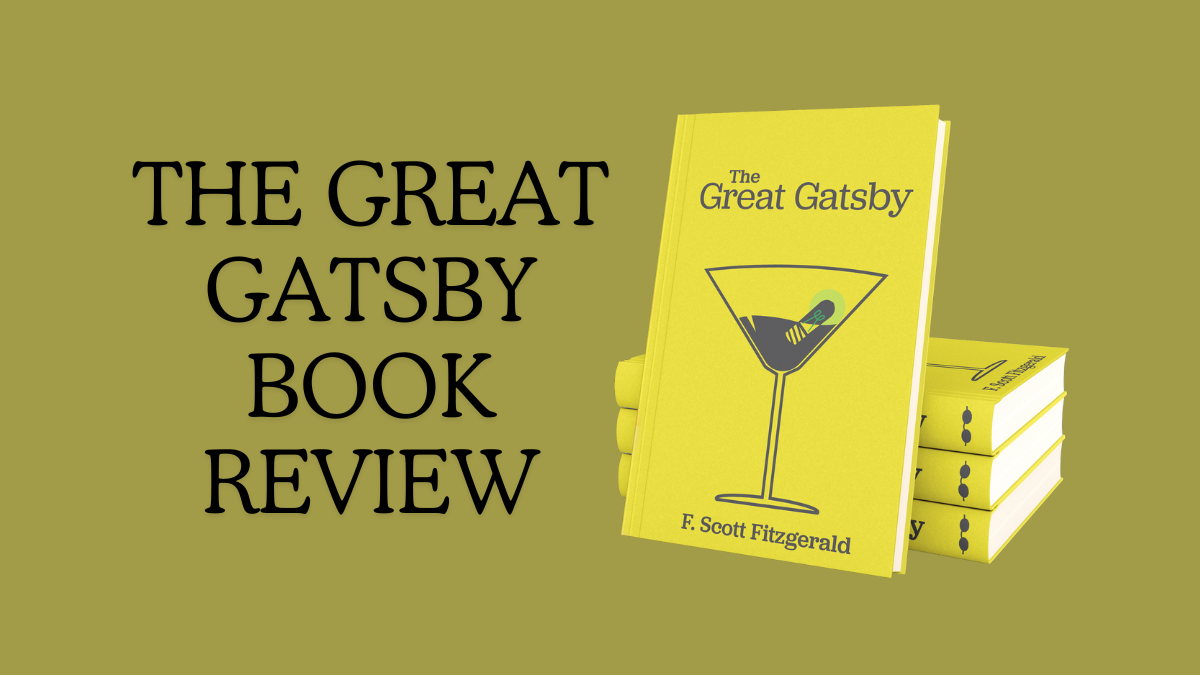The Great Gatsby Book Review And Analysis is written with compact and interesting facts to get you into the world that F. Scott Fitzgerald wrote, if you are interested in this renowned story be sure to follow our article and find out the mystery within.
The main protagonist of The Great Gatsby is Jay Gatsby who is widely known from the novel The Great Gatsby. F. Scott Fitzgerald wrote it.

Jay Gatsby was a self-made millionaire in love with Daisy Buchanan, a married woman. The book explores themes of wealth, love, and the American Dream.
The novel has been widely praised for its vivid descriptions and unique style. It has been described as “a masterpiece” that is both “horrifying and beautiful.” The book has also been adapted into several films and stage productions.
Overall, The Great Gatsby is a thought-provoking book that explores complex themes such as wealth, love, and the American Dream. Its vivid descriptions and unique style have made it an enduring classic of American literature.
Character List Of The Great Gatsby
Here is a list of the main characters in The Great Gatsby, along with a brief description of each:
- Jay Gatsby: A wealthy bootlegger who is in love with Daisy. He is ambitious and idealistic, the epitome of the “self-made man.”
- Nick Carraway: The narrator of the novel. He becomes friends with Gatsby and helps him to reunite with Daisy. He is relatively innocent and mild-mannered.
- Daisy Buchanan: Nick’s cousin and the former lover of Gatsby. “her superficial front is made up of sarcastic and somewhat skeptical qualities; she hides her anguish over her husband’s persistent unfaithfulness with that made-up version of herself.
- Tom Buchanan: Daisy’s domineering, patrician husband. He is having an affair with Myrtle Wilson.
- Jordan Baker: Daisy’s lifelong friend and a professional golfer.
- Myrtle Wilson: Tom Buchanan’s mistress.
- George Wilson: Myrtle’s husband.

Plot Analysis Of The Great Gatsby
The book’s protagonist, Jay Gatsby, is a complex character who embodies the American Dream. He is a self-made millionaire who has risen from poverty to wealth through hard work and determination. However, his pursuit of wealth is driven by his desire to win back Daisy Buchanan, the woman he loves. The novel explores the dangers of pursuing wealth and status at the expense of love and happiness.
Beginning Of The Story
“The Great Gatsby” is a masterpiece by F. Scott Fitzgerald that delves into the unattainable nature of the past and the complexities of altering one’s future. The story revolves around Jay Gatsby, an enigmatic and affluent individual who lives next to the narrator, Nick Carraway.
Gatsby’s Deep Affections for Daisy
Gatsby harbors a deep affection for Daisy, who is Nick’s cousin and his former love interest. Any person or circumstance that poses a barrier between Gatsby and Daisy is seen as an adversary. This includes Daisy’s spouse, Tom, societal norms, class disparities, and Gatsby’s fabricated past. However, the most formidable adversary is time itself, which hinders Gatsby from reclaiming what he has lost.
Observing Gatsby’s Objective
Gatsby’s primary objective throughout the narrative is to reconnect with Daisy and rekindle their shared history. Despite his prosperity, Gatsby yearns solely for Daisy. Many of the anecdotes Gatsby shares about himself are either fabrications or half-truths, lending a mythical aura to his past and reinforcing his image as a tragic protagonist.
The Relationship Between Gatsby and Daisy
Gatsby and Daisy rekindle their love, but their future appears bleak, primarily due to Gatsby’s inability to distinguish his dreams from reality. The gap between Gatsby’s romanticized perception of Daisy from five years ago and Daisy’s actual persona is stark. Daisy is portrayed as a superficial, materialistic individual, underscoring that Gatsby is pursuing a fantasy, not a natural person.
The Turning Point Of The Story
During a dramatic excursion into the city, Gatsby discloses that he and Daisy are in love and plan to elope to get married. However, Tom asserts that Daisy will never abandon him, and Daisy fails to confess to Tom that she never loved him.
The Themes Shown In The Book
The novel explores several themes or varied notions, including:
Wealth:
One of the central themes of the book is wealth. The novel examines how wealth can be both a blessing and a curse and how it can lead people to pursue happiness in all the wrong places.
Love:
Another theme explored in the book is love. The novel examines how love can be a source of joy and pain and drive people to do things they never thought possible.
The American Dream:
The book also explores the theme of the American Dream. The novel examines how the American Dream can be both inspiring and destructive and how it can lead people to pursue wealth and status at all costs.
Reception:
The Great Gatsby has been widely praised for its vivid descriptions and unique style. It has been described as “a masterpiece” that is both “horrifying and beautiful” 12. The novel has been readapted into multiple films and stage productions.
Overall, The Great Gatsby is a thought-provoking book that explores complex themes such as wealth, love, and the American Dream. Its vivid descriptions and unique style have made it an enduring classic of American literature.
Great Gatsby Influence Readers
The Influence On Readers Made By The Great Gatsby
A masterpiece of a novel The Great Gatsby by F. Scott Fitzgerald has influenced its readers in many ways. The book was inspired by Fitzgerald’s own life and the culture of the 1920s, and it captures the America of its time. The story appears on the list of the most influential works of fiction because its insights into socioeconomic matters are universal.
The novel is a tragic story around the lives and values of a few middle and upper-class Americans a few years after the First World War ended. It portrays the decadence and excess of the Roaring Twenties and the disillusionment and moral decay that characterized the era. The novel’s themes of love, wealth, class, and social status are still relevant today.
The impact of The Great Gatsby on readers is related to its representation of values – the reader’s and otherwise – and the sense of tragedy experienced. The novel brings up many values and attitudes that were commonplace in people of the 1920s, such as power struggles between men and women, racism, and infidelity.
The acceptance and rejection of these values affect The Great Gatsby’s impact on a reader. A text will often leave a lasting impression on a reader, and it can be seen that the acceptance and rejection of the represented values will affect the impact The Great Gatsby has upon a reader.
In conclusion, The Great Gatsby is an unchanged classic that has influenced readers for generations. Its themes are still relevant today, and its insights into socioeconomic matters are universal. The novel’s portrayal of American society in the 1920s continues to captivate readers worldwide.
Parting Words Of Appreciation About The Great Gatsby Book Review And Analysis
The ending of The Great Gatsby reflects the tragic fate of Gatsby and his unfulfilled dream. Nick Carraway, the narrator, walks through Gatsby’s empty house and remembers seeing him for the first time on his dock, reaching out to the green light across the bay. Nick realizes that Gatsby’s hope is an illusion and that we are all doomed to repeat our past. He ends with the famous line: “So we beat on, boats against the current, borne back ceaselessly into the past.”.

